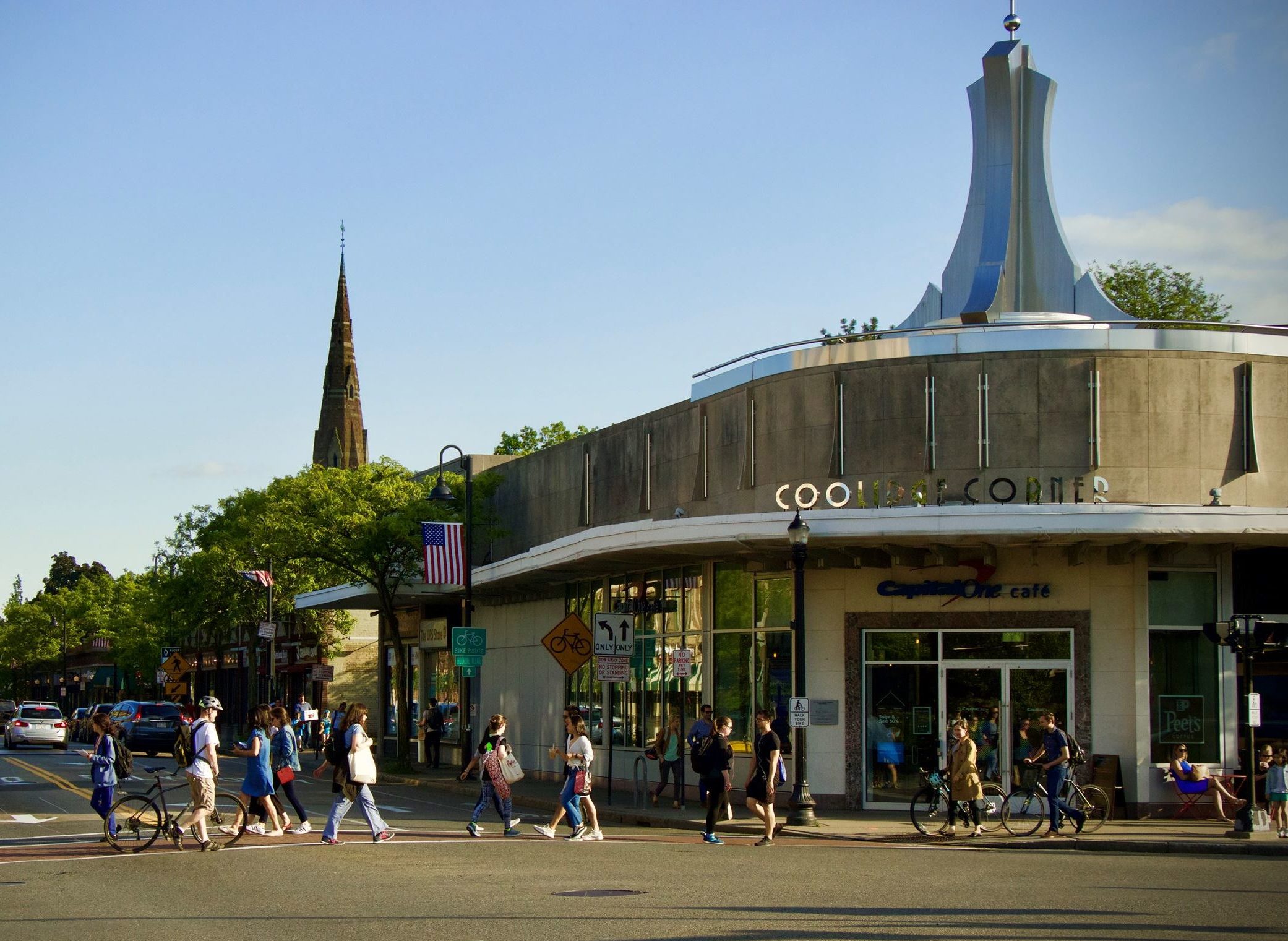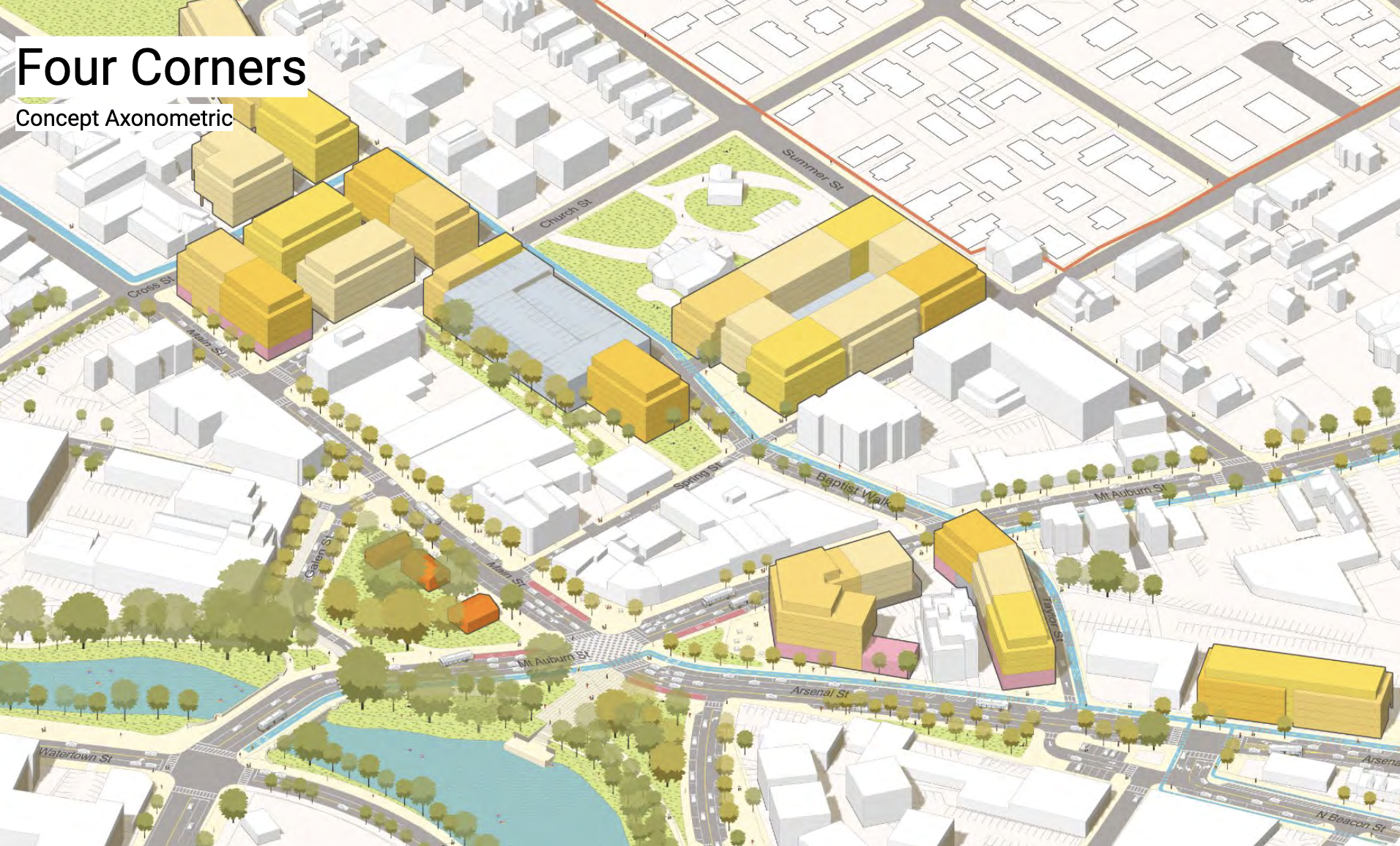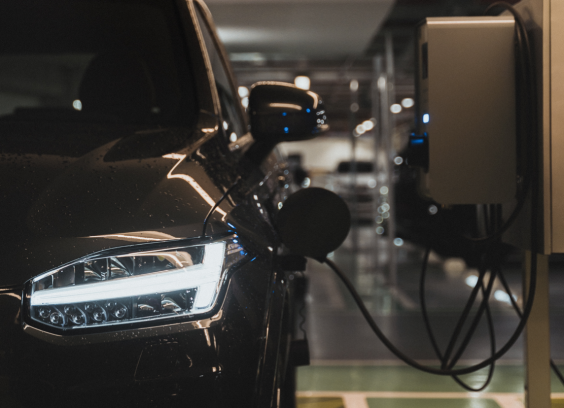Brookline to Prioritize Moving People Over Single-Occupant Vehicles
11:59 AM EST on December 26, 2019

Foot and bike traffic in Coolidge Corner. Courtesy of the Town of Brookline.
Earlier this month, Brookline’s Town Meeting overwhelming endorsed new targets for the town to reduce greenhouse gas emissions by shifting most of the town’s trips to transit, electric vehicles, or human-powered modes in the coming decades.
Warrant Article 31 (WA31), titled as a “resolution to respond to climate change by prioritizing health, access, and equity of Brookline’s public ways,” passed almost unanimously on December 5th.
Born from a town sustainability summit held this summer, the warrant article calls for the town to prioritize safe, space-efficient, and energy efficient movement of people and goods over the movement and parking of private vehicles; a departure from the current car-centric culture in Brookline, where parking dominates town-wide discussion and causes contentious debates.
WA31 aims to have 30 percent of vehicles registered in Brookline be electric by 2030, and by 2050, to have 75 percent of trips in Brookline made by human power (e.g., foot, bike, wheelchair), electric micromobility devices (e.g., scooters, e-bikes, e-wheelchairs), or electric shared rides (e.g., electric public transit).
According to the most recent available Census estimates, about 34 percent of Brookline’s workers currently drive alone to work for their commuting trips, while about 30 percent take transit, and another 16 percent walk.
While this is a departure from recent approaches to transportation in Brookline, Scott Englander, one of the 11 co-petitioners of the warrant article, noted that “much of Brookline was built as one of the world’s first transit-oriented communities back in the 1800s, but since then our public ways have become dominated by automobiles.”
This is to say that advocates are pushing for prioritizing transportation modes and land use patterns that were part of Brookline’s past, but also have co-benefits such as affordability, accessibility, and lower emissions.
Jules Milner-Brage, a co-author of the article, warned that focusing exclusively on electric cars “would leave our public ways as congested, unsafe, and non-inclusive as they currently are. We need to chart a course of transportation and land-use action that will bring all of our tools for improvement to bear on our challenges, especially those tools that have multi-faceted benefits… it is key that we better support public mass-transit, cycling, walking, and similar transport, in coordination with our efforts to electrify motor vehicles.”
“I think what’s important is that we just keep moving forward and trying new things,” said Susan Helms Daley, another of the article’s co-authors. “I would love for us to restore Olmsted’s Bridle Path along Beacon Street… And I’d love to see a pilot whereby we have a dedicated bus lane on Harvard Street for the 66 bus.”
The warrant article urges the town to try more pilot programs to demonstrate the feasibility of projects before investing in long-term infrastructure solutions. The town has done pilots in the past (for example, the recent 8-month e-scooter pilot, which ended in mid-November, or the protected bike lane westbound on Beacon Street, which was made permanent earlier this year), but historically, there has been little appetite to try short-term infrastructure projects.
While there was no opposition to WA31 expressed at Town Meeting prior to the vote on December 5th, implementation might see pushback. With budgetary constraints and residents who have historically lobbied for private car parking, mobility and climate advocates expect an uphill battle.
WA31 also recommends that the town hire a sustainable transportation professional; however, some of the article’s sponsors worry that the town’s budget may be a limiting factor.
Susan Helms Daley, another co-author of the warrant article, said in an interview after the vote that “our town budget is in trouble, so we may have to delay the hiring of a sustainable transportation professional, which would be such an important step in achieving WA31’s goals.”
Englander agreed: “We have excellent Transportation Division staff, and while their programs and projects have increased dramatically, they are the only department whose technical staff hasn’t increased in 10 years.”
But that doesn’t necessarily mean putting plans on hold until the town can hire additional people. Supporters hope that there’s potential to shift the budget in the meantime to reflect changing priorities, perhaps by reexamining the town’s existing subsidies for unsustainable transportation and land uses.
“We really need community members to let their Town Meeting Members, Select Board, and Advisory Committee know they want this (sustainable transportation) position to be a budget priority,” said Englander.
Staffing aside, advocates are hopeful that WA31 will provide a framework for the town to measure and track progress made on transportation, climate, and land-use development goals.
Milner-Brage expressed optimism about the broader potential benefits of WA31's passage. "Now, participants in Brookline government will be able to reference these ideas and strategies during decision-making and advocacy regarding future public way renovations, and private and public development projects," he said.
Streetsblog contributor Elena Huisman lives, works, and bikes in Brookline. She works in environmental philanthropy and is passionate about and advocates for safe streets.
Read More:
Stay in touch
Sign up for our free newsletter




